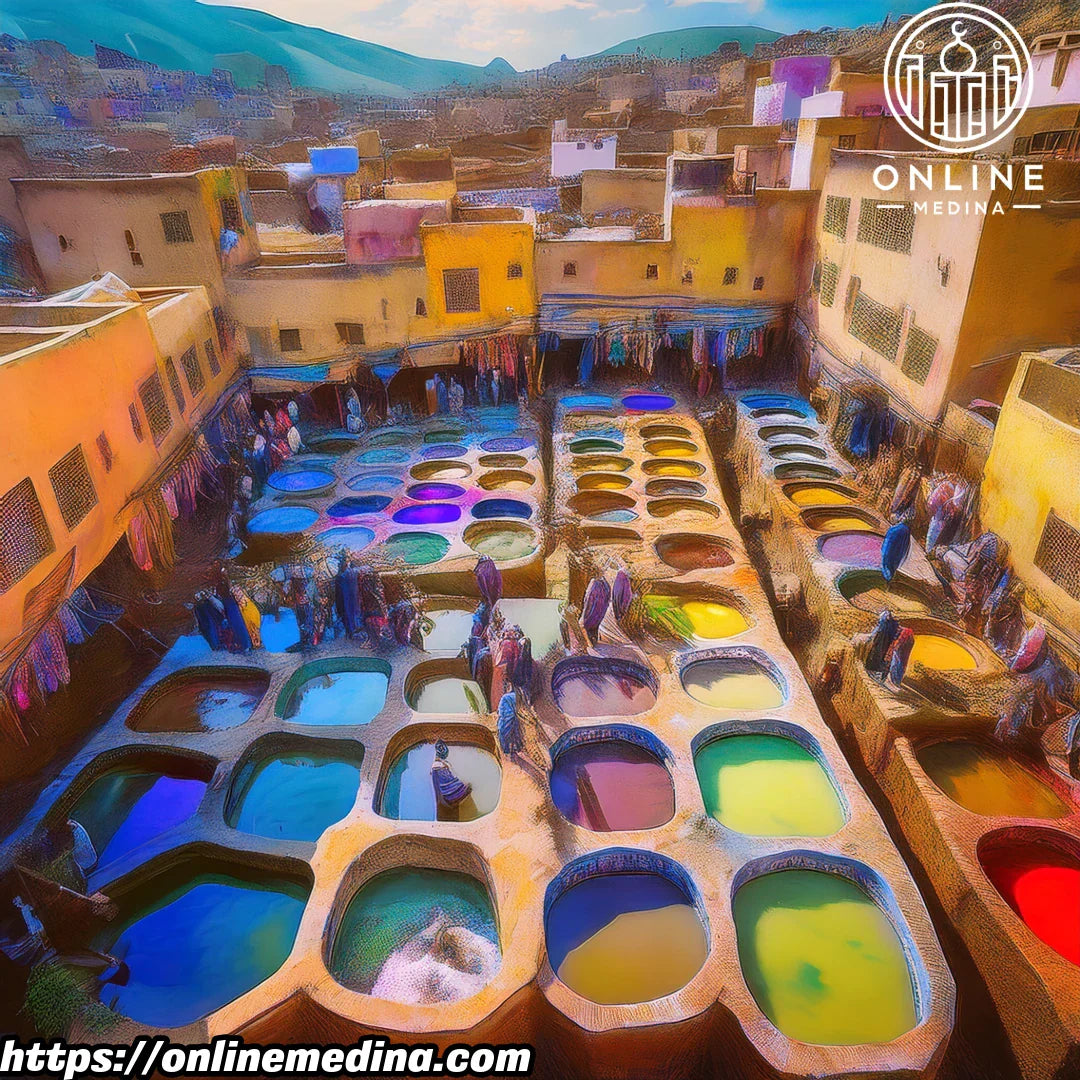
🎬 EPISODE 5: Moroccan leather and slippers
EPISODE 5. From the souks of Marrakech to the sultans' palaces, Moroccan leather tells a centuries-old story of tradition, elegance, and craftsmanship.

📜 Over 1,000 years of leather tradition
Moroccan leatherwork is rooted in the civilizations that shaped the country:
- Ancient Berbers (2000 BC): Leather was used for tents, clothing, and shoes.
- Almoravid dynasty (11th century): Marrakech became a trade hub, exporting leather across the Mediterranean.
- Saadian era (16th century): Royal palaces fueled the golden age of Moroccan tanneries.
- 19th century: Morocco supplied Europe with high-end leather goods and slippers.
- Today: This know-how blends tradition with modern design and global e-commerce.

📜 Preserving traditional tanneries
In Fez, Marrakech and Tetouan, tanners still follow ancestral processes:
- Soaking in lime and pigeon droppings to soften the hides
- Natural tanning with mimosa, cedar, and sumac bark
- Dyeing with natural pigments: saffron (yellow), indigo (blue), poppy (red), mint (green)
📍 Where to see them:
- Chouara tannery in Fez: operating since the Middle Ages
- Marrakech tanneries: smaller but equally authentic

📜 Babouches: timeless Moroccan slippers
Babouches are iconic Moroccan slippers, loved by kings, artisans, and travelers alike.
- Pointed babouches: worn in Marrakech and Fez, made from fine goat leather
- Rounded styles: typical of Berber regions, often embroidered with protective symbols
- Modern designs: blending heritage with contemporary fashion
📍 Did you know? These slippers were worn in European royal courts as early as the 14th century.
📜 Moroccan leather goods and accessories
Leather craftsmanship also shines through:
- Hand-sewn bags with traditional patterns
- Belts and wallets tanned the old-fashioned way
- Moroccan poufs in dyed leather, popular in home decor
Thanks to Online Medina, these creations are now available worldwide, straight from the souks.

📜 Leather between tradition and innovation
This ancient craft evolves with the times:
- Digital platforms help artisans reach global customers directly
- Designers mix heritage with modern aesthetics
- Collaborations highlight Moroccan leather in the luxury world
💡 Why choose Moroccan leather? For its handmade quality, durability, and beauty.
Like ceramics from Fez or Safi, it reflects centuries of skilled artistry.

🎯 A living heritage to protect
Moroccan leather tells the story of a people and a craft passed down through generations. By choosing artisanal leather goods, you support ethical local economies and preserve a unique tradition.
📌 Next episode: Explore Moroccan basket weaving and the art of crafting palm leaves and esparto grass in the heart of the souks!
👣 Moroccan leather caught your eye? Browse Online Medina and discover our handmade leather goods.
